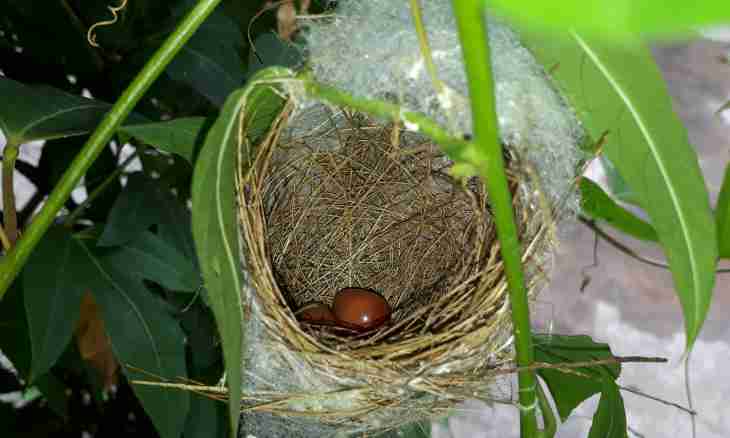Birds – heavenly creations which fascinate by the diligence and working capacity. Having constructed an own lodge without hands, they deserves admiration. The manufacturing techniques of nests also attract interest as each bird twists the nest differently.
Birds and their technologies of weaving of nestsAfter the birdie finds the soulmate, the male and a female begin to create the cozy corner. Each bird does it in own way therefore it is possible to determine by a nest easily what bird lives in it. For example, rooks like to twist nests near the relatives. On one tree you can see a set of nests which are located very closely to each other. This distance so insignificant that rooks can reach a beak to the next nest.
Rooks choose building material in the form of boughs, and from within pave a nest a dry grass. Unlike many other birds, rooks do themselves nests not for one year and also constantly repair them.
The tree with 1-2 nests belongs generally to soroka. Their nests have an appearance of a huge sphere with gleams. As a basis for the dwelling of a soroka use the earth. Having stuck together a strong bowl, they start creation of deepening which poultry breeders call a tray. The tray of a soroka is covered with rags. I begin "large construction" of a soroka in the spring. Their nests are famous for durability and not only rains and snowfalls, but also strong winds take out.
The majority of birdies of choristers give preference to construction of nests in the form of open bowls. However each species of songbirds twists a nest in the style. For example, the wagtail takes a moss, backs, leaves and small stalks as a basis, and inside covers a tray a hair and down. In general, its nest looks as an uncombed heap of leaves.
Many birds do nests in hollows. To it woodpeckers, titmouses, nuthatches and starlings belong.
Nests of chaffinches, unlike a dwelling of a wagtail, have accurater appearance. The chaffinch densely twists the deep bowl from stalks of a moss of a lichen and grass, and the tray dims down, hairs and feathers. Outside this bird covers a nest with bark and a lichen. The wren twists a nest in the form of a sphere, closing it from above. This bird species for construction uses leaves, straw and a moss, and an entrance to a nest it does sideways. As for swallows, they mold the nests from clay and dirt, sticking together them saliva. Nests have the form of a hemisphere and often are located under roofs or on walls of houses. Martins at construction of lodges use allocations of the hypoglossal salivary glands. From these nests in Indonesia and China cook exotic and very expensive soup.
For what birds need nestsThe creation reason birds of nests is quite simple - it is descendants. Building strong nests, birds care for that their eggs were in perfect security. The nest not just serves as the secluded town, but also protects eggs from overcooling. For this purpose the majority of birds warm a bottom of nests a moss, wool, a grass, down, hay and feathers. Eiders specially pull out the down and completely wrap up with it eggs. And after baby birds grow, this down is collected by people and use it as filler in down jackets. Birds - surprising creations, and to people are to what to learn from them!

